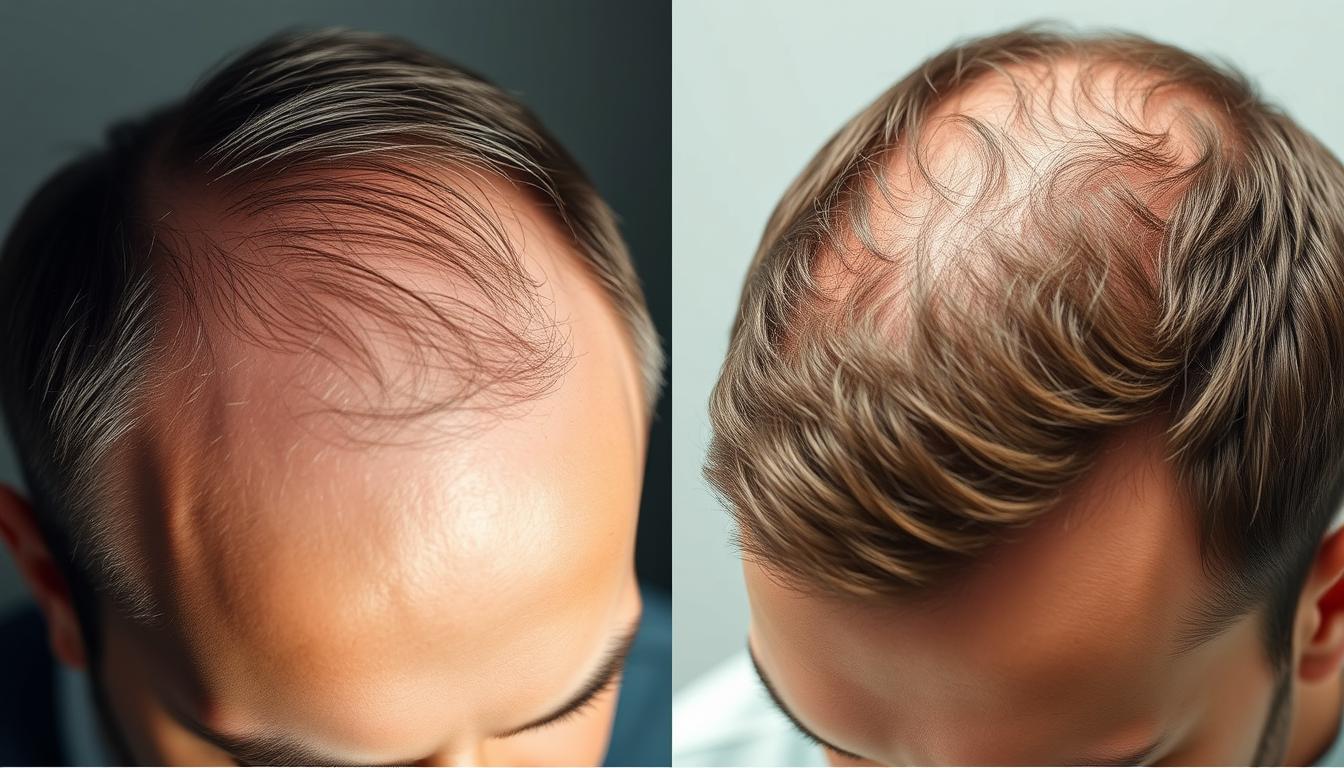At Cosmedica, a caring atmosphere and honesty are paramount. The clinic takes pride in showcasing real patient results, providing a transparent view of what can be achieved through their hair restoration services.
By examining before and after pictures, potential patients can gain a better understanding of the hair transplant procedure and its potential outcomes. The clinic’s results demonstrate the effectiveness of modern hair restoration techniques.
Key Takeaways
- Real patient results from Cosmedica’s hair transplant procedures.
- Understanding the hair transplant process and its outcomes.
- The importance of before and after photos in hair restoration.
- Modern hair restoration techniques and their effectiveness.
- Factors influencing the results of a hair transplant procedure.
The Transformative Journey of Hair Restoration
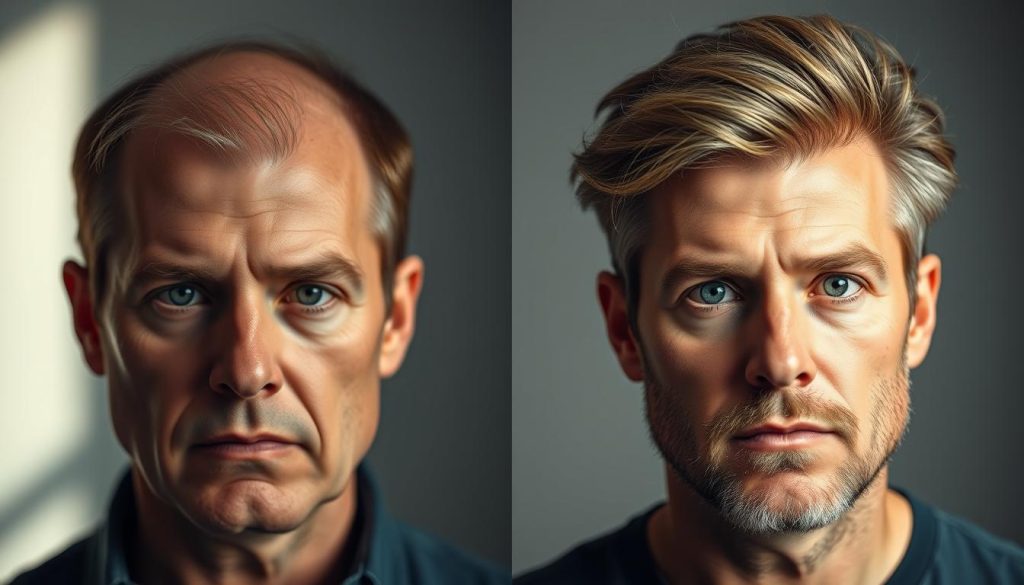
Embarking on a hair restoration journey can be life-changing for those experiencing hair loss. At Cosmedica Clinic, a personalized approach is taken to address each patient’s unique hair situation. By examining old photos and assessing the prospects for future hair loss, a tailored plan is created.
Understanding the Hair Transplant Process
The hair transplant procedure involves extracting follicular units from donor areas and implanting them into recipient sites. Modern techniques ensure minimal scarring and a natural-looking hairline that blends with existing hair. The number of hair follicles available for transplantation is determined during the initial consultation.
The procedure is highly individualized, taking into account the patient’s scalp health and hair characteristics. This personalized approach helps in achieving optimal results from the hair transplant.
Setting Realistic Expectations for Results
It’s crucial to understand that hair transplant results develop gradually over time. Factors such as age, hair type, extent of hair loss, and overall health influence the final outcome. A qualified surgeon will assess a patient’s needs and create a customized treatment plan, ensuring realistic expectations are set.
By choosing a skilled surgeon, patients can expect a natural-looking result that enhances their appearance and confidence. The final outcome is worth the wait, as the transplanted hair grows and matures over time.
Hair Transplant Before and After: Real Patient Results
Witness the transformative power of hair transplants through real patient before and after photos. Hair transplant procedures have revolutionized the field of hair restoration, offering individuals a chance to regain a full head of hair and confidence.
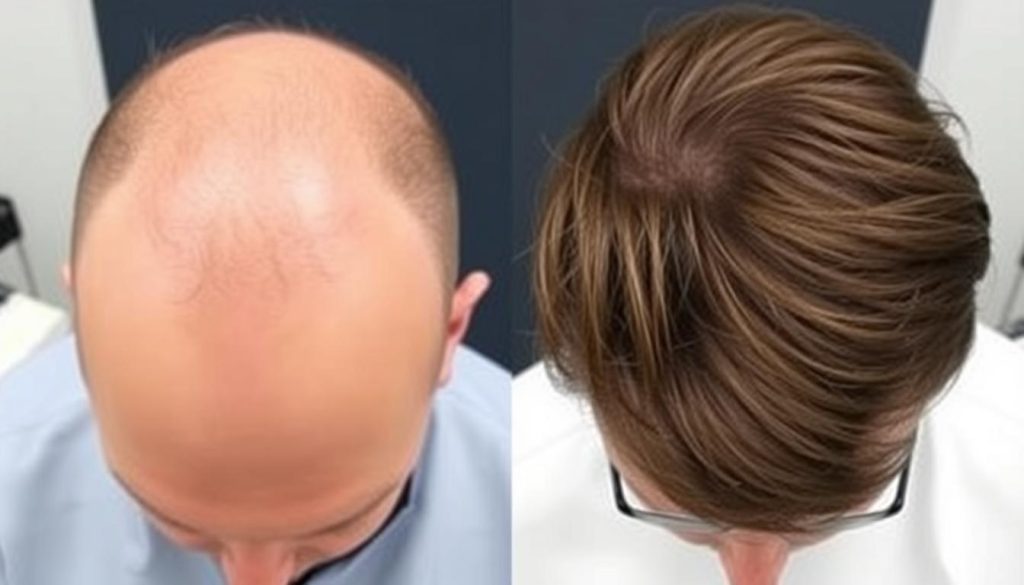
Receding Hairline Transformations
A receding hairline can significantly affect one’s appearance and self-esteem. Hair transplant procedures can restore a natural-looking hairline, framing the face and rejuvenating one’s overall look. For instance, a patient underwent a hairline transplant procedure with 1,819 grafts, resulting in 4,266 individual hairs, thereby enhancing their hair density and overall appearance.
The procedure involves carefully implanting grafts to create a natural hairline. The number of grafts used can vary depending on the extent of hair loss and the desired outcome.
Crown and Full Head Restoration Results
Crown and full head restoration are common applications of hair transplant surgery, addressing more extensive hair loss patterns. By carefully placing grafts in these areas, surgeons can achieve a natural-looking hair density that blends seamlessly with the patient’s existing hair.
A notable example is a patient who underwent a comprehensive two-day hair transplant procedure, receiving 4,033 grafts amounting to 8,024 hairs. The result was a dramatic enhancement in hair density, as evident in the before and after photos taken one year post-procedure.
The Results Timeline: What to Expect Month by Month
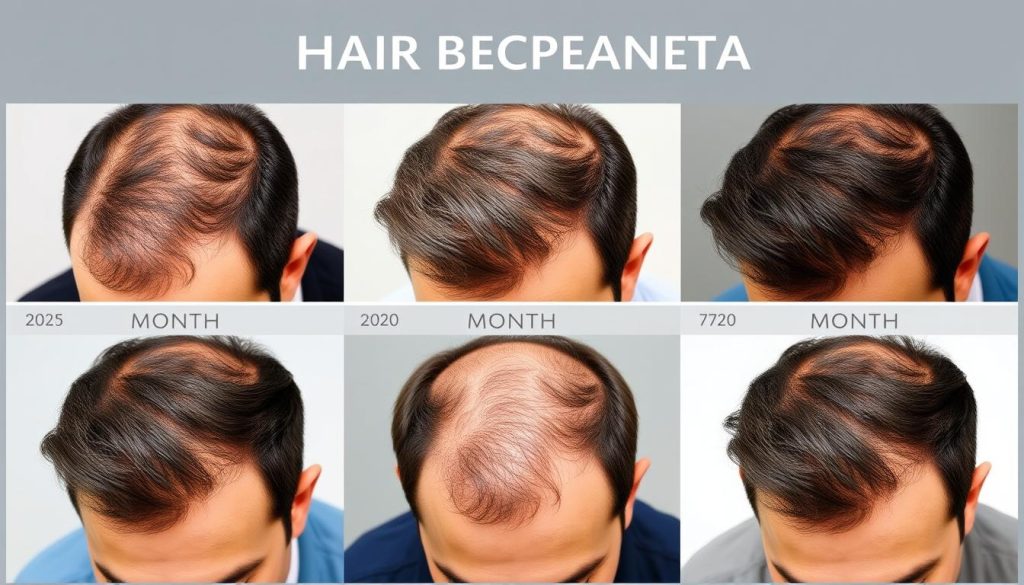
The period following a hair transplant is marked by various stages of healing and growth, which are essential to understand. After the procedure, the transplanted hair will typically shed within a few weeks, a phenomenon known as “shock loss.” However, this is a normal part of the process, and new hair growth should begin within a few months.
Initial Growth Phases (1-6 Months)
During the initial months following the hair transplant, patients may experience redness, scabbing, and temporary shedding. These are normal parts of the healing process. It’s crucial for patients to be patient and not expect immediate results, as the transplanted hair begins to grow and mature.
Key milestones during this period include: the beginning of new hair growth around 3-4 months post-procedure, and a noticeable increase in hair density as the transplanted hair starts to thicken.
Final Results: When Your New Hair Fully Matures
It usually takes around 8 to 12 months to see the full and final results of a hair transplant. Most patients see significant improvements between 6 and 12 months after the procedure. The transplanted hair gradually thickens and matures over time, eventually blending with the existing hair.
Patience is key during this period, as individual variations exist, and some patients may see results sooner or later than others. Factors such as the quality of the donor area, surgeon expertise, and post-procedure care can influence the outcome.
Understanding the timeline and being aware of the factors that influence hair transplant success can help manage expectations and lead to a more satisfying outcome. By knowing what to expect month by month, patients can better navigate their hair restoration journey.
Graft Count and Coverage: Visual Impact Comparison
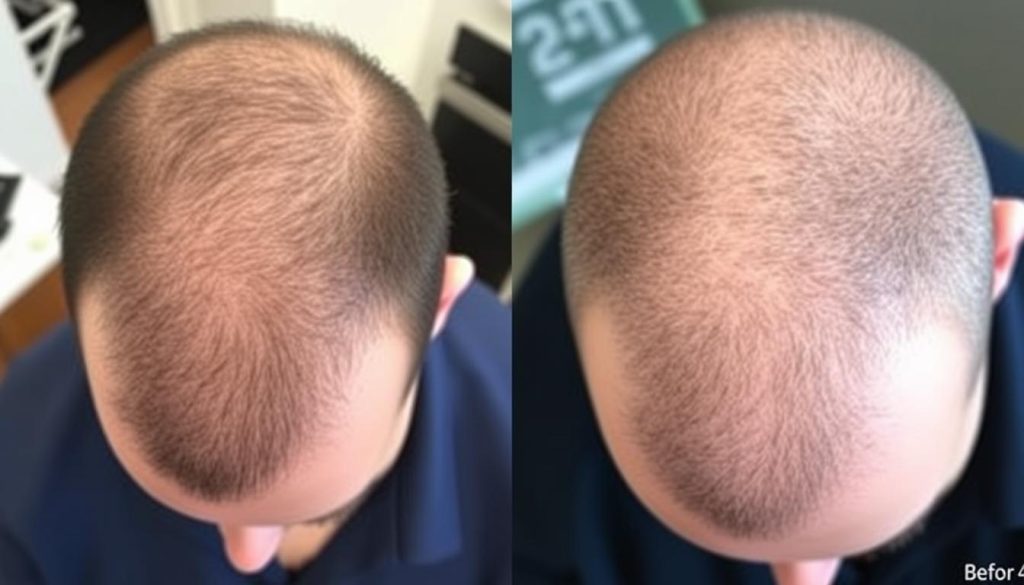
Understanding the impact of graft count on hair transplant results is crucial for individuals considering this procedure. The number of grafts used can significantly influence the outcome, affecting both the coverage and density achieved.
Surgeons determine the appropriate number of grafts based on the extent of hair loss, desired density, and available donor hair. For instance, frontal hair loss may require fewer grafts compared to more extensive hair loss conditions.
2000-3000 Grafts: Before and After Transformations
For individuals experiencing frontal hairline recession or moderate crown thinning, 2000-3000 grafts are often sufficient. Before and after pictures of patients who received this range of grafts demonstrate significant improvements.
These transformations showcase the potential for moderate graft counts to address specific areas of hair loss effectively.
3500+ Grafts: Solutions for Advanced Hair Loss
More advanced hair loss patterns or full head coverage require larger graft counts, typically 3500 grafts or more. These procedures can address extensive baldness while maintaining a natural appearance.
By understanding the relationship between graft count, coverage area, and density, individuals can better appreciate the trade-offs involved in hair transplant procedures. Quality of grafts and proper placement are just as important as quantity in achieving satisfactory results.
Modern Techniques and Their Aesthetic Outcomes
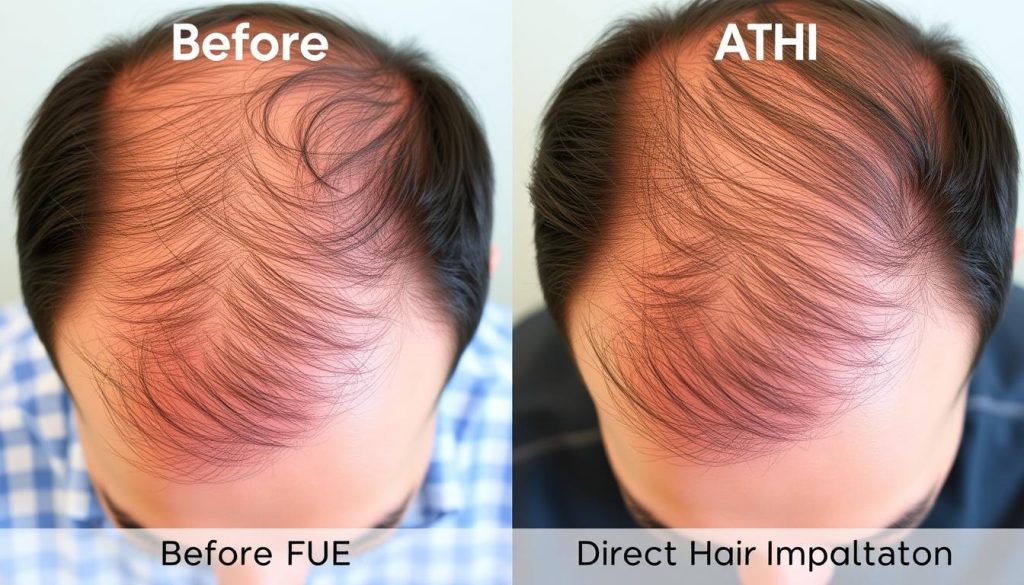
The latest advancements in hair restoration have led to the development of sophisticated techniques like FUE and DHI. These modern methods have revolutionized the field, offering patients more effective and less invasive options for hair transplantation.
Natural-Looking Results with FUE
FUE, or Follicular Unit Extraction, is a minimally invasive technique that has become the gold standard in hair transplantation. This method involves extracting individual follicular units directly from the donor area using a specialized tool, leaving no linear scar. The precision of FUE allows for natural-looking hairlines that are virtually indistinguishable from the patient’s original hair growth pattern.
FUE hair transplant results are highly regarded for their natural appearance and minimal scarring. The technique enables surgeons to achieve high-density hair coverage, making it an ideal choice for many patients.
Precision and Density with Sapphire and DHI Methods
Sapphire FUE and Direct Hair Implantation (DHI) are newer innovations that further refine the hair transplantation process. Sapphire blades create smaller, more precise incisions, allowing for greater density and faster healing compared to traditional methods. DHI, on the other hand, enables simultaneous extraction and implantation, reducing the time grafts spend outside the body and potentially improving survival rates.
These advanced techniques offer patients the potential for even more natural-looking results and improved density. Before and after pictures of patients who have undergone these procedures can provide valuable insights into the aesthetic outcomes that can be achieved.
Factors That Influence Your Hair Transplant Success
The success of a hair transplant procedure is multifaceted, depending on various factors that contribute to the overall outcome. While before and after pictures can be impressive, individual results vary significantly due to multiple influencing variables.
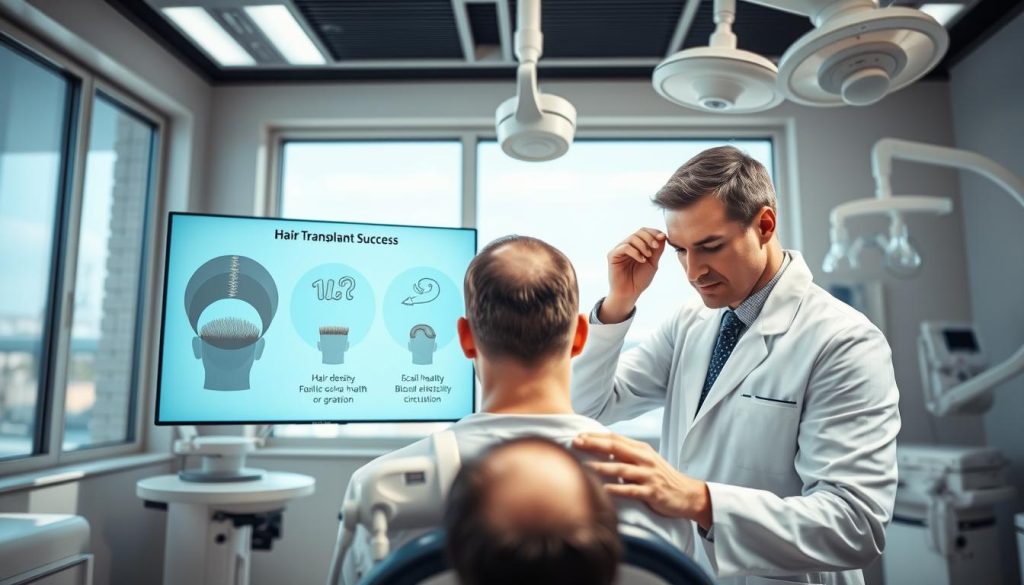
Donor Area Quality and Hair Characteristics
The quality and characteristics of the donor area play a crucial role in determining the success of a hair transplant. The density, thickness, and texture of a patient’s donor hair directly affect the final result. Factors such as hair color, curl pattern, and contrast with skin tone influence how natural-looking the transplanted hair appears.
Surgeon Expertise and Clinic Selection
The expertise of the surgeon and the choice of clinic are critical in achieving satisfactory results from a hair transplant. Evaluating a surgeon’s credentials, experience, and before-and-after portfolio is essential when selecting a provider for hair transplantation. A skilled surgeon ensures that the procedure is performed with precision, maximizing graft survival and optimal results.
Post-Procedure Care for Optimal Results
Post-procedure care is vital for maximizing graft survival and optimizing long-term results from a hair transplant. Following the advice of a hair restoration specialist in the initial weeks after surgery is crucial. Specific aftercare instructions, including sleeping position, washing techniques, activity restrictions, and medication regimens, support successful healing and growth, ensuring the transplanted hair remains healthy and natural-looking.
Is a Hair Transplant Worth It? Long-Term Results and Satisfaction
The decision to undergo a hair transplant is significant, and understanding its long-term value is essential. For many individuals struggling with hair loss, a hair transplant can be a life-changing solution, offering a permanent and natural-looking result.
A successful hair transplant can have a profound impact on one’s self-esteem and confidence. By restoring a natural hairline, individuals can experience improved overall well-being. The transplanted hair is taken from areas of the scalp that are resistant to genetic hair loss, making it a long-lasting solution.
One of the key benefits of a hair transplant is its permanence. The transplanted hair can last a lifetime, providing a natural appearance and eliminating the need for ongoing non-surgical treatments. Patients who have undergone successful hair transplants often report improved confidence, self-image, and quality of life.
When considering a hair transplant, it’s essential to evaluate the potential long-term results and patient satisfaction rates. Before and after pictures of patients 5-10+ years post-procedure demonstrate the durability of the results. Additionally, understanding the factors that influence patient satisfaction, such as graft count and surgeon expertise, can help individuals make an informed decision.
Ultimately, determining whether a hair transplant is worth it involves careful consideration of individual circumstances, goals, and expectations. By consulting with a qualified specialist and understanding the potential outcomes, individuals can make an informed decision that aligns with their needs and lifestyle.
FAQ
What is the ideal candidate for a Follicular Unit Extraction (FUE) Hair Transplant?
The ideal candidate for FUE is an individual experiencing hair loss or thinning, with sufficient donor density in the back and sides of the scalp. They should be in good overall health and have realistic expectations about the procedure’s outcome.
How long does it take to see the final results of a Hair Restoration procedure?
The final results of a hair restoration procedure can take several months to a year or more to fully mature. Initially, the transplanted follicles will shed, and then new growth will begin within a few months.
What is the difference between FUE and other hair transplant methods?
FUE is a minimally invasive technique that extracts individual follicular units directly from the donor area, leaving minimal scarring. Other methods, like strip harvesting, involve removing a strip of scalp, which can result in a linear scar.
How many grafts are typically required for a full head hair transplantation?
The number of grafts required varies depending on the extent of hair loss and desired density. On average, a full head transplantation can require anywhere from 2000 to 5000 grafts or more.
Is hair transplant surgery painful?
Most patients report minimal discomfort during and after the procedure, thanks to local anesthesia and post-operative pain management. Some may experience mild soreness or swelling, which typically resolves within a few days.
Can hair transplant results look natural?
Yes, with modern techniques like FUE, hair transplant results can look very natural. The key to a natural appearance is a skilled surgeon who can artfully design the hairline and distribute grafts to achieve a seamless blend with existing hair.
How do I choose the right surgeon for my hair restoration procedure?
When selecting a surgeon, consider their experience, qualifications, and before-and-after photos of previous patients. It’s also essential to read reviews and ask about their approach to hair restoration and post-operative care.
